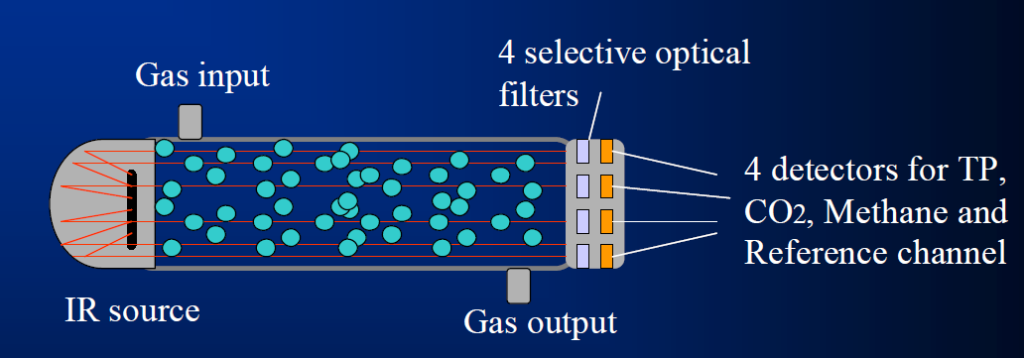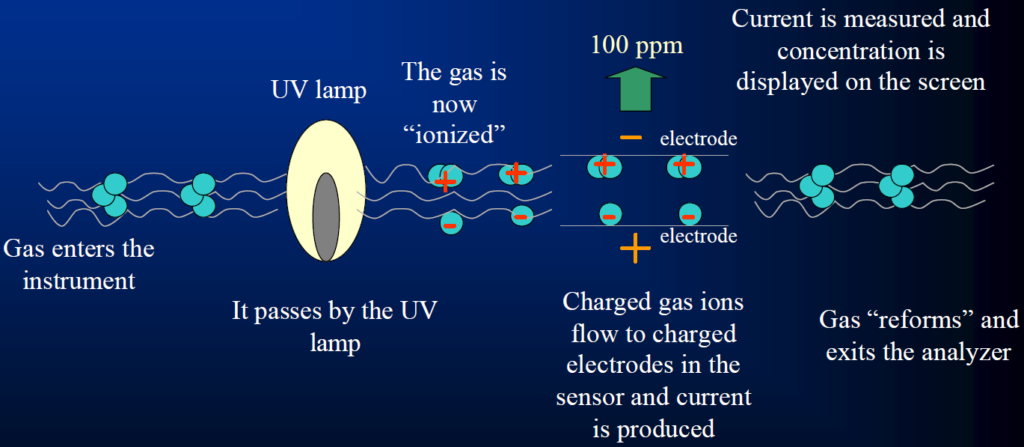Technology
Research and Development has always been the key to the success of RS DYNAMICS technologies. Our research team is constantly looking out for new research and technology trends to anticipate future customer needs for creating handheld and portable devices, in keeping with our company motto “science for homeland safety”. The following parts of our web do give a general introduction into the scientific fields that are the basis for RS DYNAMICS products and how we are making use of the latest research results.
Explosives Trace Detection
Our complex security concept is based on general idea to provide affordable solution for early warning to possible security threads in dense network of checkpoint with related specialized centers for next deeper security screening. Each checkpoint can be equipped by easily handled simple sensitive device while security centres can evaluate suspicious situation in more details.
Our goal is not looking for dangerous contraband itself, we are searching for roots of potential security risks.
When searching for potential threats originating from explosives, one strategy is to search for traces of explosives on the most microscopic level. When a person comes into contact with explosives or its packaging, traces of explosives adhere to everything that the person subsequently comes into close contact with, such as mobile phones, various tickets or passports. This makes it possible to identify persons who have been in contact with explosives even when they do not have the contraband on them during the screening process. Of course this places high demands on the detection device, such as a extreme sensitivity together with low false alarm rate, ease of use, operational robustness and resistance against cross-talking chemicals (such as perfumes and other organic materials) and many other substances.
The basis for our patented
The advantage of using our IRSSIL technology lies in its ability to pick up and recognize a real nano-traces of explosives, so we don’t need gather explosive material in a bulk amount for successful detection. IMS technology, on the other hand, is also very sensitives, but it can suffer from serious problems with overload, saturation and cleaning issues, together with so-called peak resolution – meaning that two different materials can appear as one when forming ions of similar size and mass, thus showing up as one substance on an IMS spectrum. Our IRSSIL solution, by contrast, is incomparably more robust in the capability to resist over-saturation and are absolutely free from any kind of cleaning problems. IRSSIL technology is also more robust in the real field use, resisting successfully various hard and changing climatic conditions (rapidly changing ambient moisture, temperature, dusting, e.t.c., providing unbeatable low level of false alarm rate!
In case that visible amount of the material is available, we can use our advanced Raman spectrometry using the
Environmental Measurements
Our technology for environmental measurements is targeted especially on soil contamination survey tasks. We use unique combination of PID and IR detection technology for relative and fast in situ monitoring of contaminant with separate reading for methane, hydrocarbon group and CO2. Field experience has proved that an IR analyzer is essential to the general Soil Contamination Survey. The contaminant concentration is often above 3000 ppm, where PID detection cannot be used. If hydrocarbons are present in the contaminant, consequent continuity between PID and IR outputs can be observed. Our technology uses an intelligent, grid-oriented data logging that allows the completed 3-D graphic output description of the subsurface contamination in very transparent way.
IR Absorption Spectroscopy
Infrared Spectroscopy is principle for organic and inorganic chemistry analysis using infrared light interacting with a molecule. Infrared spectroscopy exploits the fact that molecules absorb specific wavelength of the light that are characteristic of their structure. Selected molecules have specific resonant frequencies where the absorption of radiation with proper wavelength is significantly higher in comparison to other part of spectra. Level of the absorption on given wavelength can be precisely measured and recalculate to amount of the substance of interest. By transmitting a beam of IR radiation through the air , or through any particular gas volume, and recording how much is transmitted at selected spectral lines, one may decide which gases are present and how much of each.
Most gases have their characteristic spectra in the infrared specturm. Those spectra derive from the molecule’s composition in such a way that no two molecular gases have the same IR spectrum. IR spectra are the fingerprints of gases, and thus allow gases to be uniquely identified.
IR wide spectrum radiation is passing through the gas column. On the same time the sampled gas is transported through the tube.
The Infra Red analyses, used in our products are unique in the field of extremely short analytical tube (just 80 mm), combined with highly sophisticated analogue and software signal processing technology, capable to extract the “invisible” signal from the surrounding noise level. This solution, originally applied in radar signal detection technologies, allows to use extremely small, short analytical tube to achieve the real detection limit in hundreds of ppm level.
The special selection of the individual IR sensors and customer-made sensor selective filter (as for the group of petroleum hydrocarbons, carbon dioxide, N2O, H2S and precise reference channel and unique, Methane measuring channel, which spectral line located at the wavelength, where other IR sensor do not operate), enables our new system to achieve the extreme sensitivity in this size of instrument case and, also, the unique capability of the IR section to provide exclusive and sharp selectivity for the Methane gas, existing in the wide spectrum range of other organic compounds. Optional H2S and N2O channels enables the system for application in the very specifiic environmental investigation projects.

There is the additional advantage of our new IR system solution that can be found in the signal processing and analogues system dynamic range. Our IR measuring channels work in the huge dynamic range from unbelievable hundreds of ppm to 500 000 ppm without changing the measuring range, that is absolutely unique in the field of portable instruments. This unique feature enables to make the measurements of soil sampled gas simultaneously and, what is more important, in one sampling, without necessity to repeat the measurement, if the measuring range of (other) instrument would be selected improperly. “One shoot” measurement is extremely important in working in non-permeable soils, where the real amount of the gas sample is very limited and can not be available for repeated measurement (with different measuring range). This feature makes the ECOPROBE system still unbeatable and very popular in the real field use.
Photo Ionization Detection
A PID uses an ultraviolet light source (various wavelength to various applications – (9.6 eV, 10.6 eV and 11.7 eV) to break down chemicals to positive and negative ions (Ionization) that can very sensitively be measured with a detector. It measures the charge of the ionized ions and converts the signal into electric current in pico-ampers. The current is then amplified and software recalculated into “ppb – ppm or microgram/m3 – to miligram/m3 (depending to the molecular weight of the molecules)” units.

Due to the innovative design of the analytical PID chamber, the unique ECOPROBE 5 PID section measures the concentration in high dynamic range down from low levels (10 ppb) to relatively high levels of (4 000 ppm) of Volatile Organic Compounds (VOCs) and other toxic gases. Many hazardous material incidents are VOCs and the sensitivity of PID’s to VOCs make them an invaluable tool for initial incident assessment, leak detection and spill delineation. Proper selection of easily exchangeable PID lamp (together with easy software switch of their factory calibration) makes the system semi-selective and is an easy task to be set-up for various environmental projects/tasks.
After measurement, the ions reform the original gas. PIDs analysis are non-destructive, they do not permanently alter the gas, and allow the gas to be used for further analysis by another methods, in our case by IR absorption spectrometry. This enable the ECOPROBE system to be comfortably and in proven way used for head-space analyses of contaminated samples of the underground water.
In combination to the the advantage of cheap and reliable mapping the the contaminant spread in the soil subsurface areas, and the head-space analyses of the sampled underground water sample, the system provides extremely effective and fast in-situ system for evaluating and mapping the spread of the poisonous contaminants in the subsurface soil and underground water environment.


